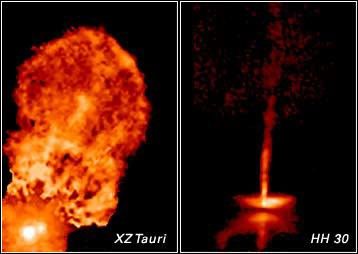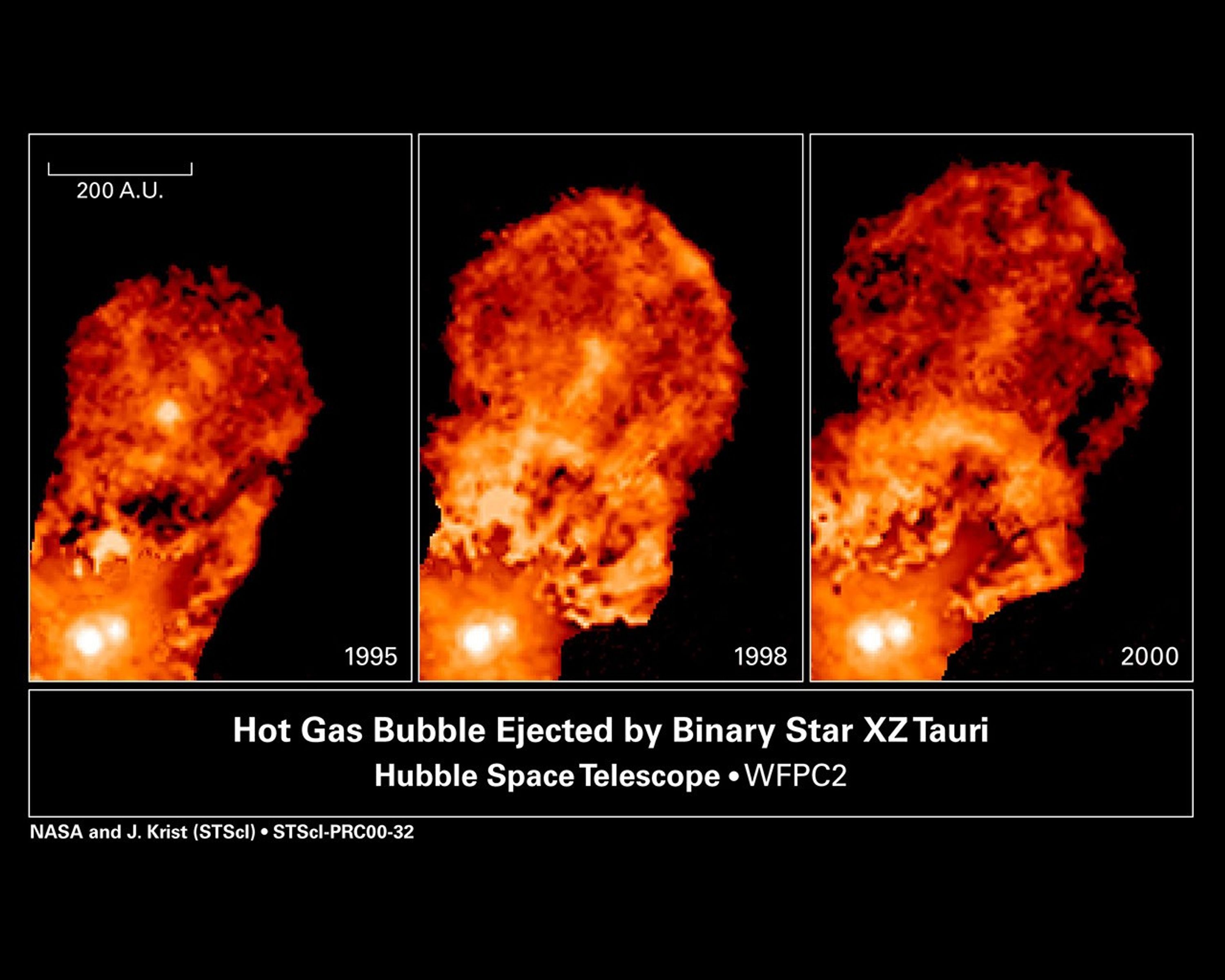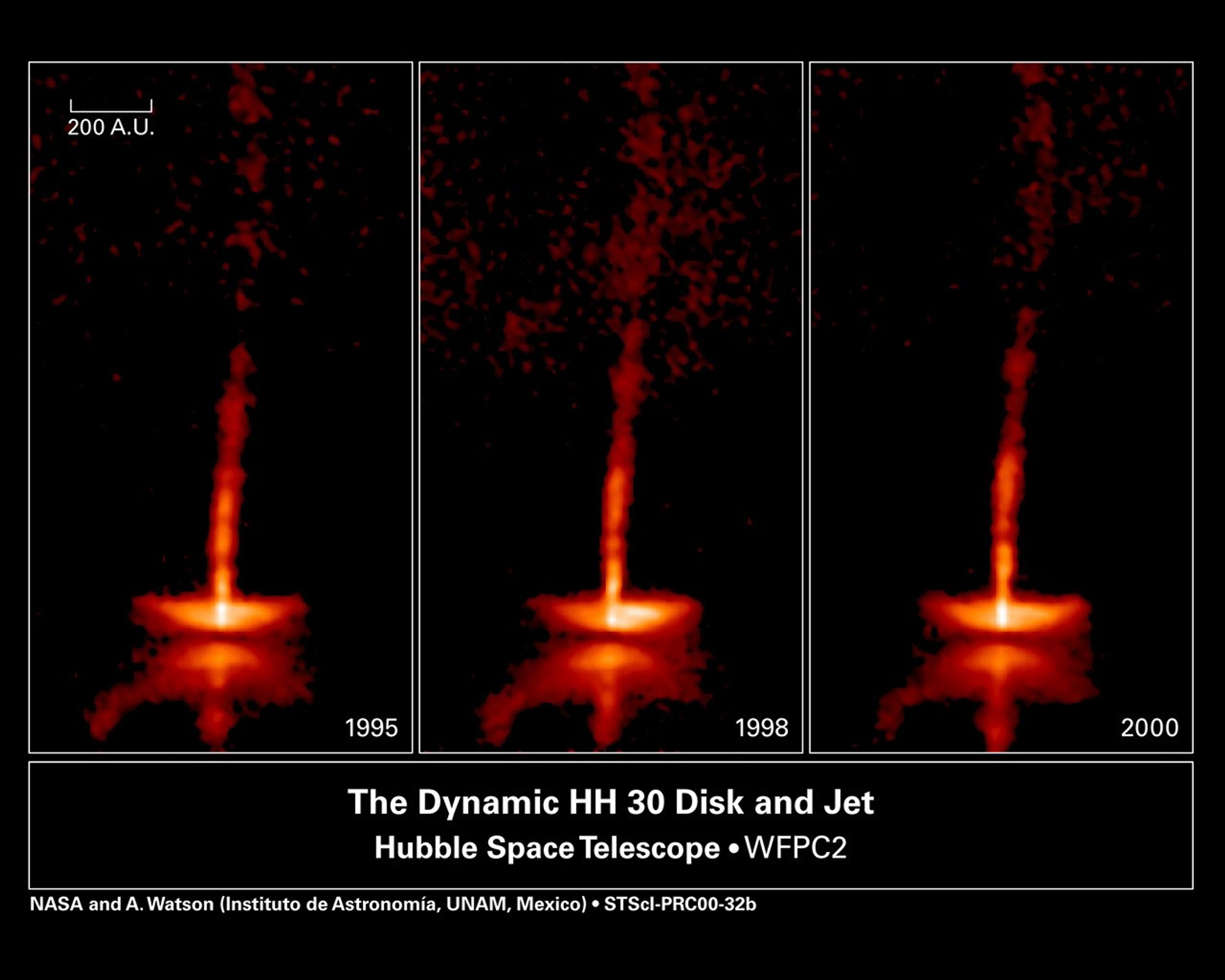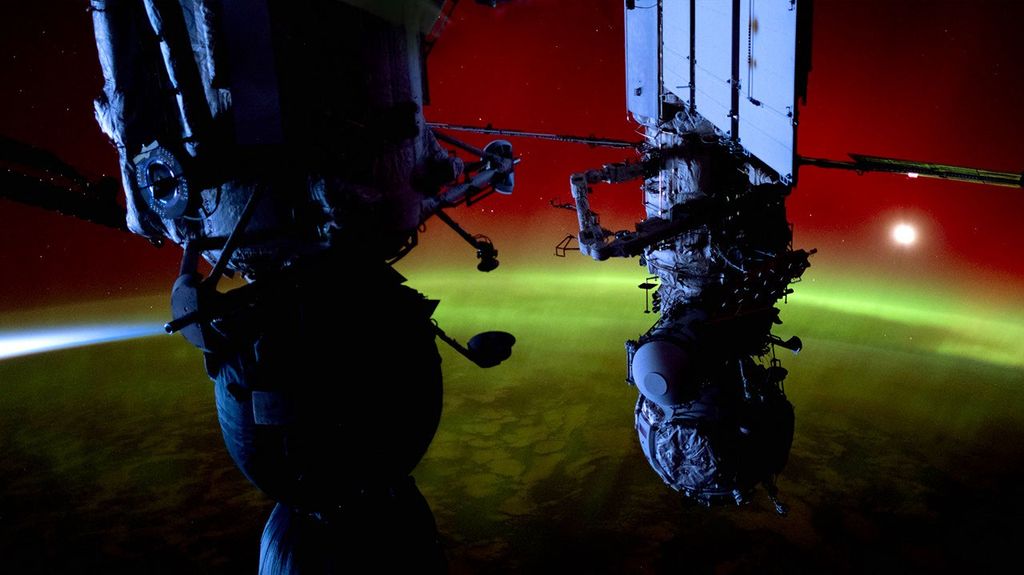1 min read
HH 30
Hubble observations of HH 30 show a pair of thin jets streaming away from the center of a dusty disk. The disk, which is over 40 billion miles (64 billion kilometers) in diameter, is seen almost edge-on. Like a thin, dark cloud moving in front of the Sun, the disk blocks any direct view of its central star. All that is seen are the top and bottom sides of the dusty disk reflecting light from the star, like the "silver lining" of a cloud. The jets reveal the hidden star's location. Astronomers are interested in the disk because it is probably similar to the one from which the Sun and the planets in our solar system formed.
HH 30's disk and jet show dramatic changes in the six years covered by the time-lapse movie. The jets are easiest to explain: as in XZ Tauri, material is being ejected along the magnetic poles of the star at speeds of between 200,000 and 600,000 miles per hour (320,000 and 960,000 kilometers per hour). Every few months a compact clump of gas, called a knot, is ejected, and may eventually merge with other clumps downstream. However, astronomers aren't sure why the knots in the upper jet are moving only about half as fast as in the fainter, lower one.
The changes in the disk are quite peculiar: patterns of light appear to be moving around within it. Astronomers believe this effect is similar to distant clouds being illuminated by the beam from a lighthouse: As the light rotates, the clouds seem to brighten and then fade. In the case of HH 30, the lighthouse is the star and the inner part of its disk, which throws bright rays and casts dark shadows on the outer part of the disk. This "lighthouse" in HH 30 appears to be rotating between once every few days and once a year. Astronomers hope more observations will narrow down that cycle and thus show whether the light patterns are shadows cast by material in the disk or beams of light from hot spots on the star.
- Release DateSeptember 21, 2000
- Science ReleaseMovies from Hubble Show the Changing Faces of Infant Stars
- Credit
Related Images & Videos

Movies from Hubble Show the Changing Faces of Infant Stars
Time-lapse movies made from a series of pictures taken by NASA's Hubble Space Telescope are showing astronomers that young stars and their surroundings can change dramatically in just weeks or months. As with most children, a picture of these youngsters taken today won't look...

Hot Gas Bubble Ejected by Young Binary Star System XZ Tauri
These images taken with the Hubble Space Telescope's Wide Field and Planetary Camera 2 reveal the evolution of bubbles of glowing gas being blown out from the young binary star system XZ Tauri. Gas from an unseen disk around one or both of the stars is channeled through magnetic...

Young Star HH30's Dynamic Disk and Jets
These images of HH 30 show changes over only a five-year period in the disk and jets of this newborn star, which is about half a million years old. The pictures were taken between 1995 and 2000 with the Wide Field and Planetary Camera 2 aboard NASA's Hubble Space Telescope....
Share
Details
Claire Andreoli
NASA’s Goddard Space Flight Center
Greenbelt, Maryland
claire.andreoli@nasa.gov































